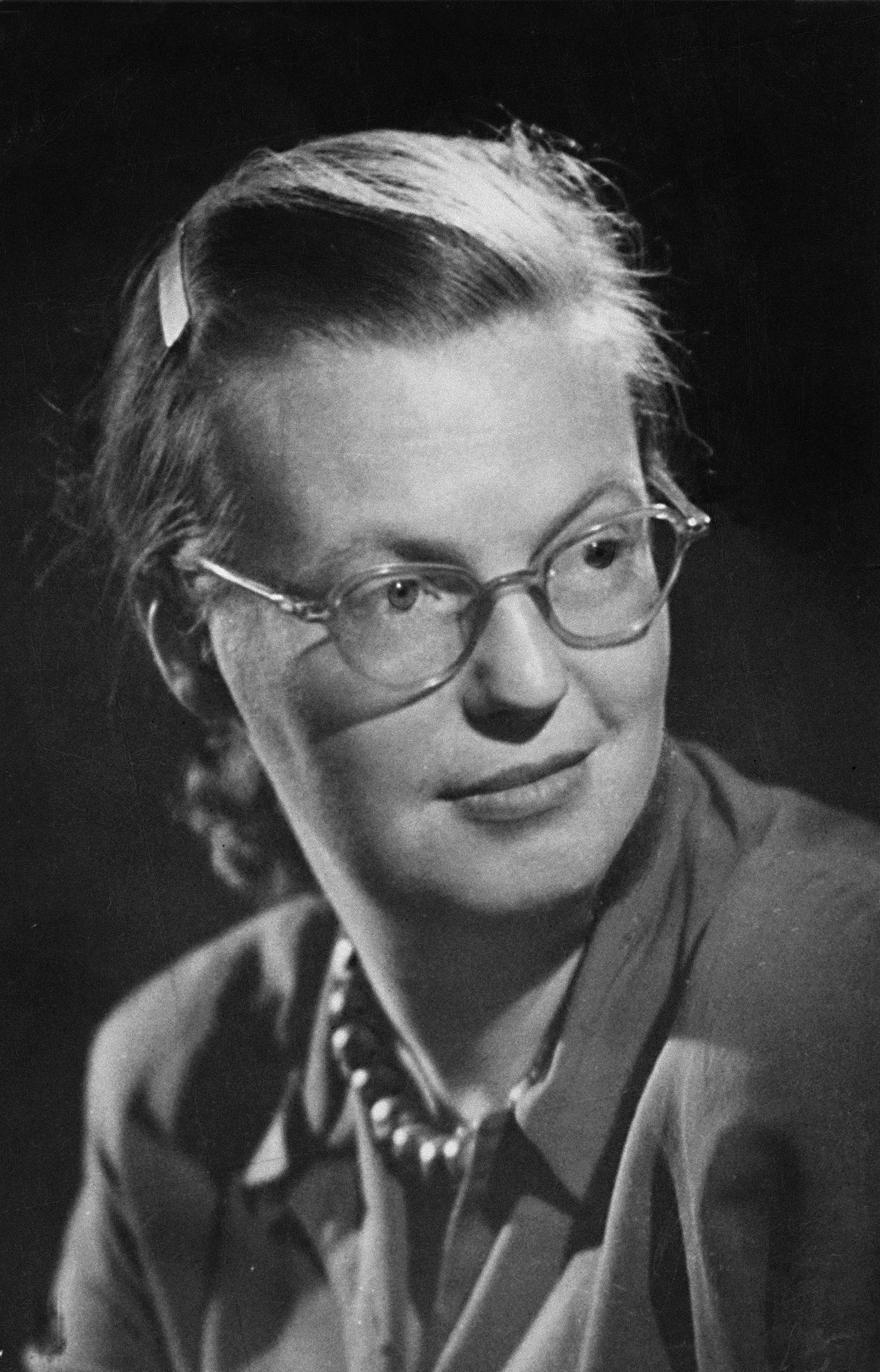
A full century after the birth of the author Shirley Jackson—who was born on Dec. 14, 1916—her name remains synonymous with the psychological drama of her stories and novels, most famously the Hunger Games precursor The Lottery. During Jackson’s short career, before her death at 48 of a heart attack, critics often noted with surprise that her work “came from a contented wife and good-humored mother of four,” as her TIME obituary noted. Today, those expressions of surprise can be noteworthy for their sexist undertones (“When busy Housewife Shirley Jackson finds time for a new novel…”), but they also reveal one of the truths of Jackson’s fiction: even within the most ordinary of circumstances, danger may lurk.
Here’s what TIME’s critics said about some of her most chilling work:
The Lottery and Other Stories (1949)
Exactly what this story means each reader may decide for himself; like much genuinely first-rate fiction, it allows for a variety of interpretations because it reverberates with many possible meanings. But no reader is likely to doubt that it will soon find a place as a minor classic in the American short story, a ruthless fable about the human soul that might have come out of Hawthorne.
Unfortunately, nothing else in The Lottery is as good. The other 24 pieces are brightly lacquered sketches trimmed to New Yorker specifications—deadpan, passionless portraits of cruel children, quietly miserable spinsters, clumsy middle-class drifters, city people lonely in the country. Shirley Jackson accumulates little piles of irrelevant detail, topples them over with the expected sardonic swipe. If she could break out of this mold, she might become one of the U.S.’s best short-story writers.
Hangsaman (1951)
The rope around the neck of 17-year old Natalie Waite was homemade. Her father had made up his mind that his imaginative child would be a writer; Natalie tried to please him, even if it meant dressing up in a personality that wasn’t hers. But the masquerade proves too much for Natalie. Hangsaman is Shirley Jackson’s description, simple and terrifying, of a young girl sinking into schizophrenia.
The Bird’s Nest (1954)
A racing axiom has it that a thoroughbred always returns to its best form. In The Lottery and Hangsaman, Shirley Jackson gave signs of being a writing thoroughbred, but The Bird’s Nest marks only scattered returns to her best form.
The Haunting of Hill House (1959)
“…By this time Dr. Montague and the others insist on sending her home, and Eleanor’s life ends in one of those terrible scenes of mental horror that Author Jackson knows so well how to contrive. The difficulty is that the story is itself caught in a straitjacket fashioned by the lines of case history. Expert as it is, The Haunting of Hill House is also haunted by too many other novels that owe their life to the father of psychoanalysis.”
We Have Always Lived in the Castle (1962)
Shirley Jackson is a kind of Virginia Werewoolf among the seance-fiction writers. By day, amiably disguised as an embattled mother, she devotes her artful talents to the real-life confusions of the four small children (Life Among the Savages, Raising Demons) in her Vermont household. But when shadows fall and the little ones are safely tucked in, Author Jackson pulls down the deadly nightshade and is off. With exquisite subtlety she then explores a dark world (The Lottery, Hangsaman, The Haunting of Hill House) in which the usual brooding old houses, fetishes, poisons, poltergeists and psychotic females take on new dimensions of chill and dementia under her black-magical writing skill and infra-red feminine sensibility.
The deranged but enchanting mentality that Author Jackson has chosen this time belongs to Mary Katherine (“Merricat”) Blackwood—actual age 18, mental age a precocious twelve. “I like my sister Constance, and Richard Plantagenet,” she reflects, “and Amanita phalloides, the death-cup mushroom.” She is a gentle child who promises herself to be kinder to her Uncle Julian. She is already kind enough to Constance and to her enigmatic cat Jonas. But for some reason she is never allowed to touch knives.
More Must-Reads from TIME
- Cybersecurity Experts Are Sounding the Alarm on DOGE
- Meet the 2025 Women of the Year
- The Harsh Truth About Disability Inclusion
- Why Do More Young Adults Have Cancer?
- Colman Domingo Leads With Radical Love
- How to Get Better at Doing Things Alone
- Michelle Zauner Stares Down the Darkness
Contact us at letters@time.com